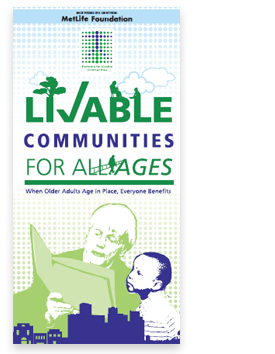Livable Communities for All Ages is a thoughtful brochure that reflects years of expertise and findings, as well as resources and case studies, on how all facets of the community can contribute to a more “older adult –friendly” environment.
With the goal of promoting safer and affordable communities, "Livable Communities for All Ages" features a specific guide on which aspects of civic life—whether the local Chamber of Commerce or an individual—can respond to the maturing of America with instructive measures on the benefits of older adult livability adaptations in four areas:
- Housing
- Transportation
- Workforce Development
- Civic and Cultural Engagement/Lifelong Learning
Harnessing the expertise and experience of the aging population is one of the key assets that transforms a vulnerable community into a livable community. Encouraging the perception of older adults as community assets and civic allies requires all functions of society—including governments, community stakeholders, businesses, nonprofits, philanthropists, and local media—to expand awareness of the largest population of educated and skilled older adults in history.
Livable Communities for All Ages is a thoughtful brochure that reflects years of expertise and findings, as well as resources and case studies, on how all facets of the community can contribute to a more “older adult –friendly” environment.


Most Commented